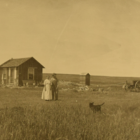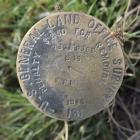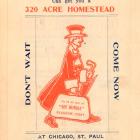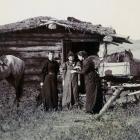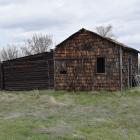Fighting for the Farm

Thomas and Erenstene Olinger homestead, two townships west of the Stearns claim. Unknown photographer, c. 1918.
Thomas and Erenstene Olinger homestead, two townships west of the Stearns claim. Unknown photographer, c. 1918.
Courtesy Valley County Historical Society
 This work is licensed under a Creative Commons Public Domain Mark 1.0 License.
This work is licensed under a Creative Commons Public Domain Mark 1.0 License.
Stearns, who was supporting her four children while seeking to establish herself in Montana, encountered plenty of resistance. A robust archival record testifies to the suspicion she engendered—likely stemming from hostility to her faith (Reformed Latter Day Saints), her sexuality (neighbors accused her of conducting an affair with her son’s employer), and her dishonesty (adjacent homesteaders joined in contesting her expanded homestead, arguing that she did not reside permanently in her shack). Particular acrimony grew around Stearns’s second homestead entry, which she applied for in December 1913 to complete her 320-acre claim; this parcel was prime benchland just above the Milk River—and sought by many of her neighbors, including Elias Stensland, whose mother and wife had filed homesteads on adjacent parcels. While Stearns persevered in defending her land against her neighbors’ legal and extra-legal efforts to force her to relinquish the land, she was left battered by the hostility expressed in the land office hearings, and retreated onto the farm, and a brief second marriage to homesteader Frank Schuld, who was developing his own homestead claim seventy miles east.
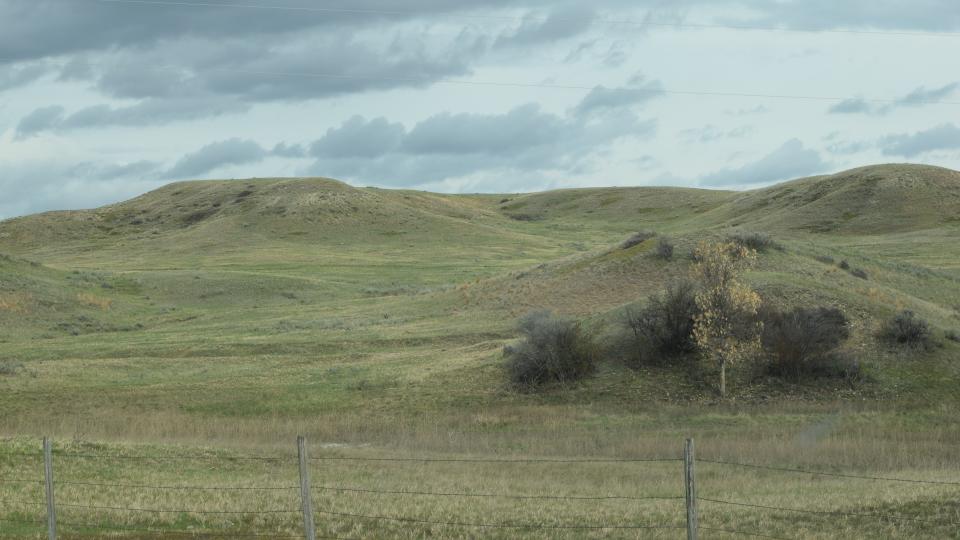
The challenges of agriculture on the rolling benchlands of the Milk River Valley are suggested by the topography of the Stearns claim. Photograph by Sara Gregg, 2019.
The challenges of agriculture on the rolling benchlands of the Milk River Valley are suggested by the topography of the Stearns claim. Photograph by Sara Gregg, 2019.
2019 Sara Gregg
 This work is licensed under a Creative Commons Attribution 4.0 International License.
This work is licensed under a Creative Commons Attribution 4.0 International License.
In spite of the drama embedded in her personal life, Stearns profited from the wet weather, and 1916 rewarded farmers with a banner harvest that maximized the year’s record-high precipitation, 20.47” (519.9 mm). With Frank and her son Emory she dug a well and worked the fields, ultimately cultivating nearly one hundred and thirty acres: ninety-five acres yielded 600 bushels (16.33 tonnes) of flax; thirty-three acres in oats and rye provided ample livestock feed; and the garden on another acre produced an abundance of vegetables.
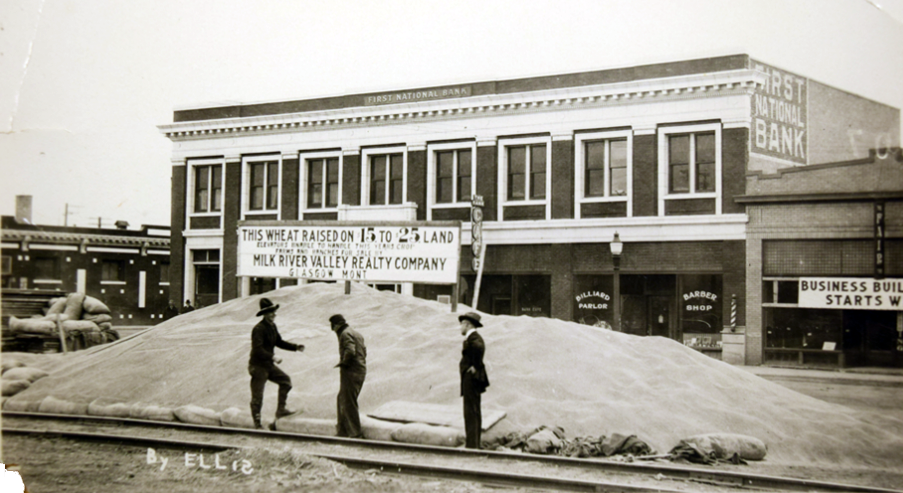
Piles of wheat in front of the Glasgow, Montana First National Bank Building. Photograph by Ellis, no date.
Piles of wheat in front of the Glasgow, Montana First National Bank Building. Photograph by Ellis, no date.
Courtesy of Valley County Historical Society.
 This work is licensed under a Creative Commons Public Domain Mark 1.0 License.
This work is licensed under a Creative Commons Public Domain Mark 1.0 License.
The oil pressed from the Stearns’s flax flowed into a vast stream that met the call for increased agricultural production during the first months of US engagement in the war in Europe. President Woodrow Wilson emphasized in an address to the nation that “Upon the farmers of this country… in large measure, rests the fate of the war and the fate of the nations.” Patriotic fervor and soaring prices induced breaking new ground across the country, and in 1917, US farmers put in their largest crops yet, increasing the acreage planted in cereals, potatoes, tobacco, and cotton to a national record of 283 million acres (114.5 million hectares), up eight percent from the year before.
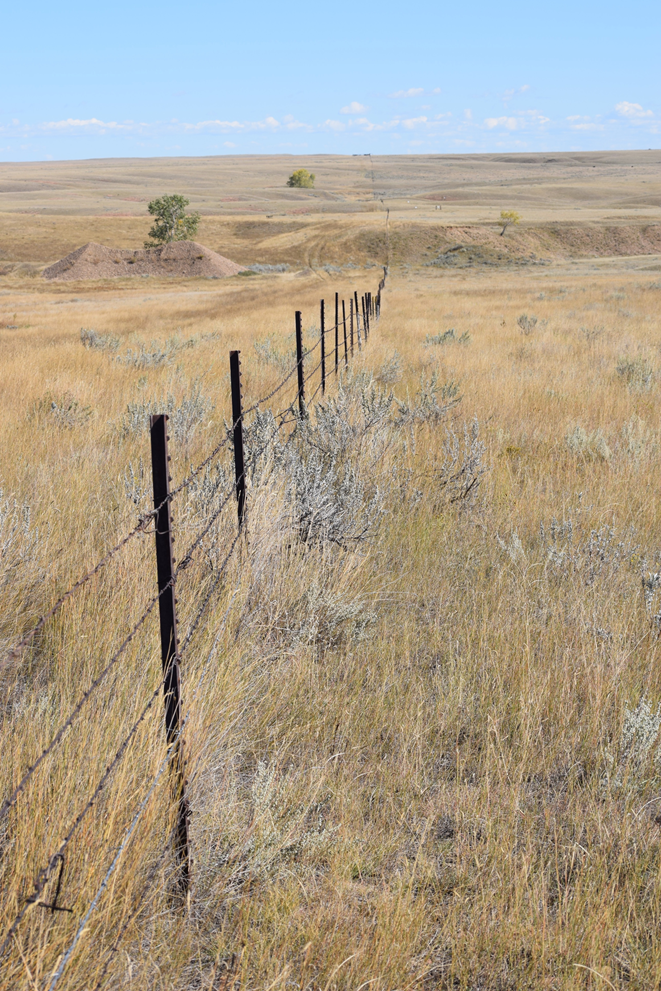
Montana’s “Big Sky Country” provides vast vistas, and little shelter, as evoked by this photograph taken one mile west of Stearns’s claim. Photograph by Sara Gregg, September 2016.
Montana’s “Big Sky Country” provides vast vistas, and little shelter, as evoked by this photograph taken one mile west of Stearns’s claim. Photograph by Sara Gregg, September 2016.
2016 Sara Gregg
 This work is licensed under a Creative Commons Attribution 4.0 International License.
This work is licensed under a Creative Commons Attribution 4.0 International License.
In spite of the national agricultural boom, economic and meteorological fluctuations stressed the limits of adaptation among homesteaders tucked into the Milk River Valley, and weather thwarted the aspirations of Northern Plains farmers during the years that followed. Wartime high prices and piercing drought descended almost simultaneously; and even though the people of Europe were desperate for American crops, and Montana homesteaders were vying for cash, the clouds withheld both rain and relief. The total precipitation for 1917 amounted to a near-record nadir of 7.83” (199 mm) in Glasgow, plunging the surrounding farms below the threshold of aridity and marking the onset of three brutal years of extreme weather.
When the General Land Office issued the patent to Lily Stearns’s homestead on 6 August 1917, the devastation of the drought was only beginning to become clear. Hail damage and grasshoppers compounded a dry period so pronounced that seed failed to germinate and forage barely grew. Stearns moved her stock to pasture further west, seeking “a place to keep them from starving” as record temperatures magnified the suffering for both farmers and their animals. The potential consequences were dire, and she reflected in a note published in her church newspaper, “We are certainly having perilous times.”



